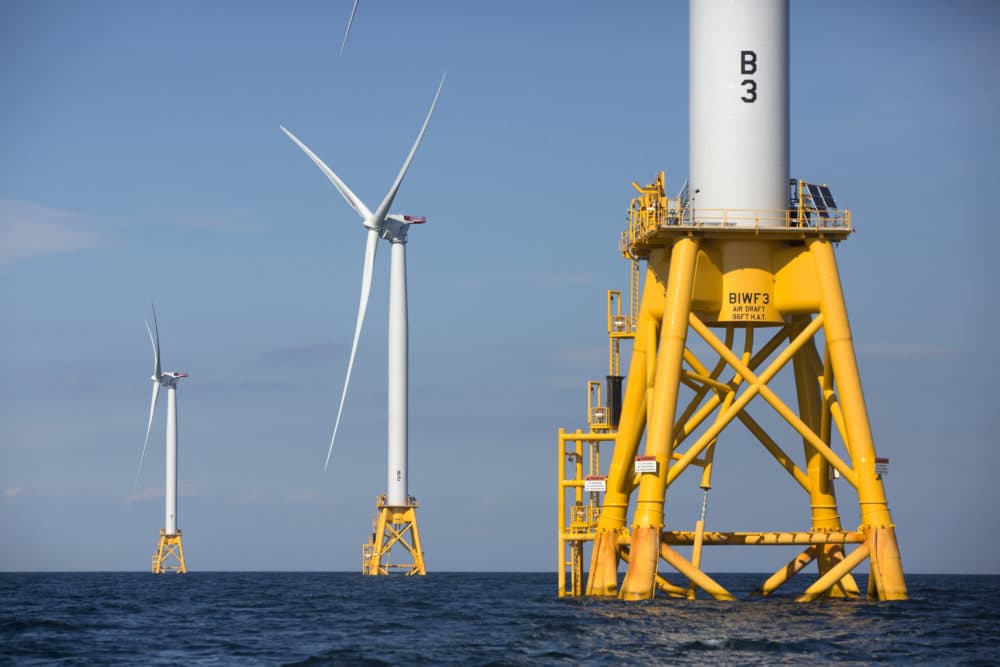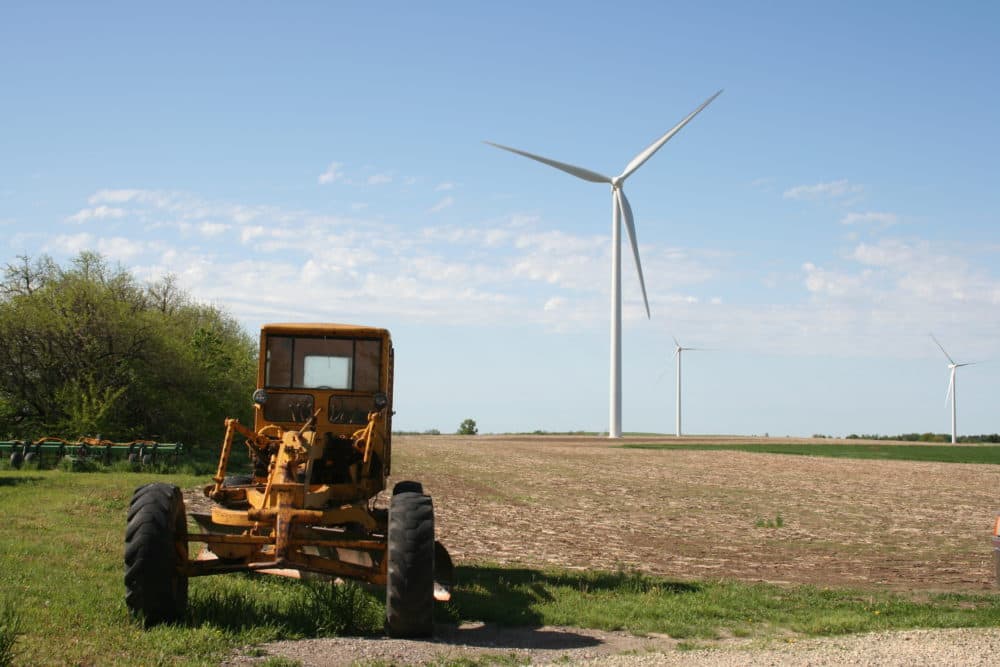Advertisement
Commentary
What Red State Kansas Can Teach Blue State Mass. About Renewable Energy

Cloud County, Kansas, is about as far as you can get, politically speaking, from proudly progressive Massachusetts. In the 2016 election, 75 percent of the county’s voters supported Donald Trump. Yet it was there, almost a decade ago, that I saw my first utility-scale wind farm, its turbines stretching gracefully across wheat fields and cattle pastures. Why, I wondered at the time, was wind power welcomed by this staunchly conservative farming and ranching community while we New Englanders — avid theoretical supporters of clean energy — were so busy fighting wind development in the Berkshires and on Nantucket Sound?
What I found in Cloud County was bottom-line pragmatism — a more potent driver of renewable energy, as it turned out, than our own brand of principled idealism.
Landowners who leased out a few acres to the Meridian Way Wind Farm enjoyed guaranteed income far exceeding what they could earn from crops planted or animals raised on the same amount of land. Local business revenues and jobs grew. The wind farm developer’s $300,000-a-year grants program for community projects won over additional allies.

I returned to Cloud County this summer to see friends I’d lost touch with since Trump’s election, in part because I was nervous to see how far apart we’d be politically. In Kansas, I encountered unbending opposition to gun control and abortion, and strong support for President Trump, but I also observed anew the rugged determination that has propelled this community, and so much of Kansas, to the front ranks of American wind energy ingenuity.
Kansas today produces 36 percent of its electricity from wind, enough to meet the needs of 1.7 million homes. It ranks second only to Iowa in wind’s share of statewide power generation. (Massachusetts gets less than 20 percent of its electricity from all renewables, including hydro.) In Cloud County (pop. 9,533), the Meridian Way Wind Farm supplies enough green power for 57,000 Kansas households, and plans are afoot to double the county’s wind generation in the coming years. With new wind power costing a fraction of the cost paid by the typical Kansas electricity customer, this is an economic bargain as well as an environmental boon.
Most of the people I spoke with in Cloud County don’t seem motivated to invest in renewable energy as a way to fight climate change. Some don’t even believe in global warming. But they are bullish about renewable energy’s importance to their community.
... ocean winds are a renewable energy frontier that we would be foolish to forego.
Cloud County Community College is a good barometer of the local buy-in to renewable energy. In 2007, a high school science teacher was hired by the college to create a wind technology training program. Five students enrolled in the program’s first year. Today there are 150. With as many as 5,000 wind-related jobs in Kansas and over 100,000 employed by the industry nationwide, well-trained wind technicians find jobs easily.
Here in Massachusetts, we should bow our heads in awe, though not in shame, as we reflect upon the soaring ascent of Kansas wind power.
Our own track record is undeniably anemic, with a mere 113 megawatts of installed wind capacity -- enough for only 20,500 Massachusetts households, or just 1.2 percent of the homes now served by Kansas wind power.
To be sure, our state’s onshore winds are no match for those that sweep across the Kansas prairie. Offshore, though, wind is finally taking hold, and is located far enough at sea to quell the objections of well-heeled vacationers who feared Cape Wind’s disruption of their ocean views. The 800-megawatt Vineyard Wind project, which won the bid in May for an ocean site 15 miles off Martha’s Vineyard, is nearly three times Cape Wind’s distance from the nearest landfall. It will also be selling its power at 6.5 cents per kilowatt hour, little more than a third of the negotiated ratepayer cost of Cape Wind’s output.
Advertisement
Vineyard Wind could become the first major link in a chain of offshore wind farms supplying renewable power to millions of utility customers up and down the Atlantic seaboard. Is it a more climate-friendly approach than crisscrossing the region with new gas pipelines? You bet.
An even greater investment in offshore wind lies ahead, once Gov. Charlie Baker signs the pending omnibus energy bill. The bill doubles the existing authorization of 1,600 megawatts for offshore wind procurement. Though this is significantly less than the 5,000 megawatts of new offshore capacity approved by the state Senate, it’s enough to bump Massachusetts up from our current, lackluster 35th-in-the-nation ranking in windpower capacity. A great next move would be to call upon the Legislature to restore the 3 percent annual increase in the state’s renewable portfolio standard, approved by the Senate but weakened by the House before landing on the governor’s desk.
Bay Staters may not be quite as ready as prairie farmers to welcome wind turbines into their midst. Berkshire breezes may be no match for the legendary winds of Kansas. But ocean winds are a renewable energy frontier that we would be foolish to forego.
